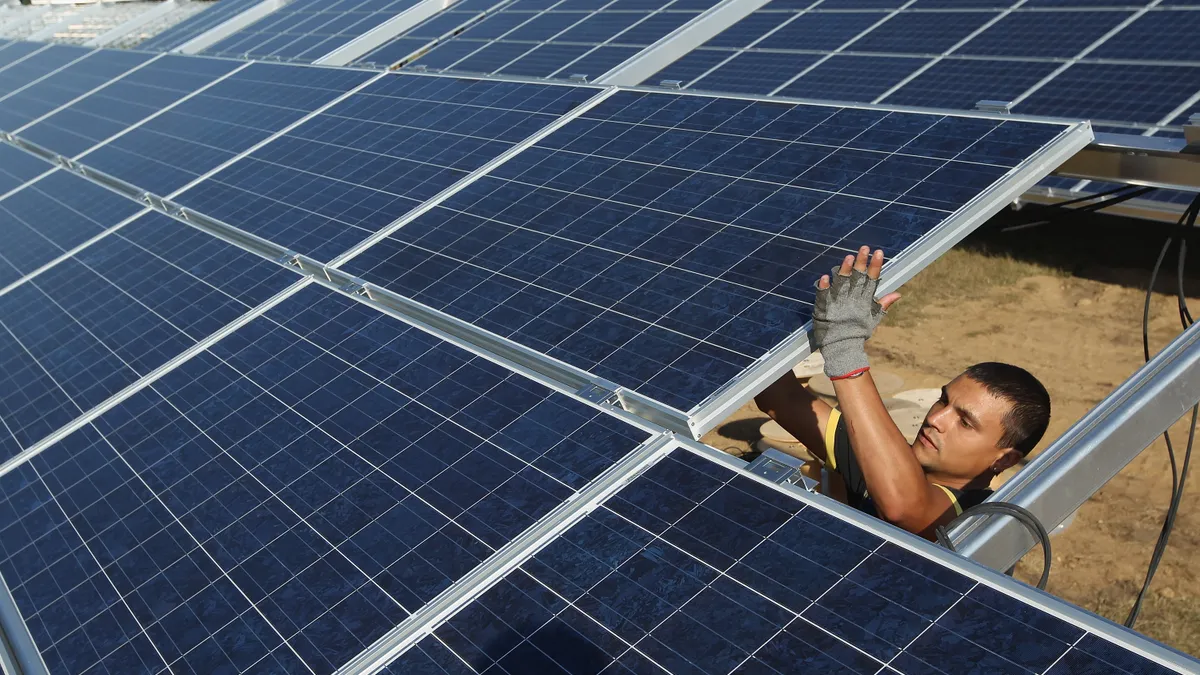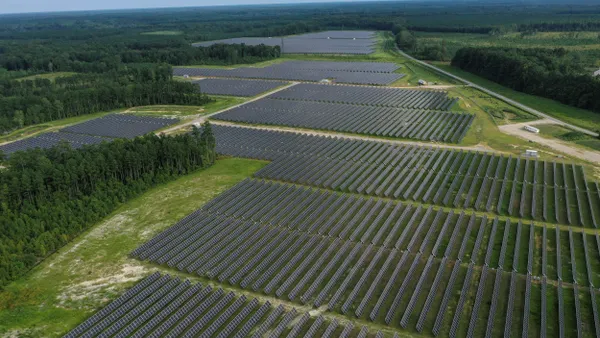Dive Brief:
- Community solar+storage projects can provide millions of dollars more in value to California utility customers when systems are built on commercial and industrial rooftops in cities rather than on open land in rural areas, says research published Monday by consultancy The Brattle Group commissioned by solar company Solar Landscape.
- Such urban siting also preserves open land — a contentious issue in the West — and achieves faster permitting and grid interconnection, the researchers found. And urban solar projects “can provide greater societal value” because job opportunities can be matched to disadvantaged, low-income population centers. The systems also could supply power to the community during a grid outage.
- The findings underscore the need for California policymakers — who are days away from the deadline to pass the 2023-24 state budget — to “allocate some state and federal incentives to ensure that not all of our community solar is getting built in the cheapest areas out in rural locations,” said Solar Landscape’s Western Policy Director, Susannah Churchill.
Dive Insight:
Community solar installations give community residents access to solar power regardless of whether they rent their home or live in a shady area. Customers buy or rent a share of an off-site solar installation that supplies their electricity and typically earn credits on their electricity bills for the electricity the installation provides.
Despite being a national leader in utility-scale solar power, California “doesn’t have workable community solar programs yet,” Churchill said, echoing sentiments solar developers have expressed for years in the Golden State. Community solar programs thus far have been very limited in size, she said, and customers often pay more for energy than they did before they enrolled, which she says indicates “the pricing structure is undervaluing the benefits of the clean energy.”
The state’s community solar landscape may be on the cusp of transformation, however, with a law passed last year authorizing the California Public Utilities Commission to develop a community renewable energy program. Infusions of money could also be on the horizon, with the state Senate Budget Committee proposing $400 million for community solar+storage in its budget and fiscal review.
The large systems needed to generate that solar power take up space. Churchill argues they should be sited on large roofs in cities, even though those projects are often a “little bit more expensive to build” than those out in rural areas, she said.
The higher cost of solar development in urban areas is partially why systems are built out in the desert, Robert Cudd, who researches community solar at UCLA’s California Center for Sustainable Communities, told LAist. “You're not just building new infrastructure. You have to find a place, a property, a location in space where you can actually put these things,” he told the news organization. “That has been prohibitively expensive for private solar developers.”
Churchill said in an email that the research her company commissioned found that for “every 100 megawatts of community solar [and] storage that gets built on warehouses and other large urban buildings instead of out in rural areas or the California desert, $175 [million] to $375 million in additional quantifiable value for ratepayers will be generated over the life of the projects, based on an average [project] lifespan of 25 years.”
This value was calculated based on a complex set of formulas the California Public Utilities Commission uses to assess the value of distributed energy resources.
The additional value that projects on large, urban roofs provide is driven by two main factors: they will make efficient use of the existing distribution grid and offset the need for “expensive and polluting gas-fired power generation in transmission-constrained parts of the state,” Churchill said in an email.
Other groups have also advocated for the build-out of solar panels on large, urban roofs. U.S. warehouses built before 2019 have the rooftop solar potential to power almost 19.4 million average homes per year, according to an April report by the Environment California Research & Policy Center. California is one of the states with the largest potential for solar generation on warehouse roofs, as it has more than 66,000 warehouses, the report says.
















